Christianity as a religious structure rests upon two fundamentally different and directly hostile “views of existence”: upon Jewish historical faith and upon Indo-European symbolical and metaphysical mythology. The kernel of the Christian religion is the conception of “redemption of man”: this idea has always been and still is strange to the Jews; it absolutely contradicts their whole conception of religion. On the other hand, it is the central idea in all Indo-European religious views; they all revolve around the longing for redemption; the hope of salvation; nor was this idea of redemption strange to the Hellenes; we find it in their mysteries, and in Plato, in the 7th book of the “Republic”, it is clearly recognizable. The idea of redemption embraces two others; that of a present imperfection and that of a possible perfection by some non-empirical, that is, in a certain sense supernatural or transcendental process: the one is symbolized by the myth of degeneration (See, O.Spengler, “The Decline of the West”), the other by that of gracious help bestowed by a higher Being. Paul goes to the root of the matter by calling sin itself a “law” – a law of the flesh, or, as we should say to-day, en empirical law of nature – and by showing in a famous passage (Rom 8), that the Church law has not the least power over sin, which is a fact of nature, over which grace alone can prevail: “And if by grace, then it is no more of works; otherwise grace is no more grace. But if it be of works, then it is no more of grace: otherwise work is no more work.” (Tit 3:5). The singer of the Veda already “searches eagerly for his sin” and finds it not in his will but in his condition, which even in his dreams holds evil up before his eyes, and finally he turns to his “God of Grace” who enlightens the simple. The Carirarka-Mimansa considers all living beings as “in need of redemption.” (H. S. Chamberlain The Myth of the 19th Century)
From Krishnamurti to Gandhi
It took a Hindu to teach Christianity its own political strategy. Mahatma Gandhi not only is called the Father of the nation of India, but he is the modern inspiration for the rediscovery of the teaching of Jesus on simplicity, fasting, and non-violence. He loved Jesus, but saw little reflection of him in institutionalized Christianity.
www.cacradicalgrace.org/.../psca/post/cloud.php
Gandhi’s racism. The truth behind the mask. Behold Sergeant Major Gandhi who supported the British in the Boer war, against the Zulu rebellion. Behold the prophet of peace who worked to stratify, by introducing the caste system, the South African society.
Which war did Mohandas Gandhi support? All of them. There wasn’t a war that the "prophet" of Non-Violence did not support. He was Sergeant Major in the British Army & won a medal for his combat service
Gandhi condones Zulu massacres and defends the British. Aug 4 1906
The Guardian, Friday Oct. 17, 2003]
GANDHI BRANDED RACISTAS JOHANNESBURG HONOURS FREEDOM FIGHTER (By Rory Carroll)
It was supposed to honour his resistance to racism in South Africa, but a new statue of Mahatma Gandhi in Johannesburg has triggered a row over his alleged contempt for black people. The 2.5 metre high (8ft) bronze statue depicting Gandhi as a dashing young human rights lawyer has been welcomed by Nelson Mandela*, among others, for recognising the Indian who launched the fight against white minority rule at the turn of the last century.
But critics have attacked the gesture for overlooking racist statements attributed to Gandhi, which suggest he viewed black people as lazy savages who were barely human.
*Incidentally, Jimmy Carter, Nelson Mandela and Kofi Anan became now one team fighting the “Israeli apartheid.”
Haruki Murakami, Japan's top writer scheduled to accept the prestigious Jersalem Prize did not answer an open letter, titled “Don't legitimize apartheid” from the Palestine Forum Japan which urged him to cancel his plans to accept the prize in Jerusalem. (Jerusalem Post Online Edition Feb. 13, 2009)
St. Augustine: “Whatever has been rightly said by the heathen, we must appropriate to our uses.”
The “germination” of the spiritual body from the physical
Like corn decays the mortal, like corn is he born again (Kata Upanishad, 1,8)
Thou fool, that which thou sowest is not quickened, except it die…All flesh is not the same flesh: but there is one kind of flesh of men, another flesh of beasts, another of fishes, and another of birds. There are also celestial bodies, and bodies terrestrial; but the glory of the celestial is one, and the glory of the terrestrial is another…So also is the resurrection of the dead…It is sown a natural body; but it is raised a spiritual body. There is a natural body, and there is a spiritual body. (1 Cor. 15:36-44)
In the ancient Egyptian story of Osiris the generative process is personified by the god Osiris, whose death and resurrection form the central theme of the myth. Osiris was associated with flowing water, the life force in plants, the reproductive power in animals, and more generally with the vital activity that maintains and propagates the order of life, all metaphors that collectively imply the notion of order-creating activity. Coffin Text 330 relates Osiris with both process and “the Order,” Mayet, the natural order of the world:
Whether I live or die I am Osiris,
I enter in and reappear through you,.
I decay in you, I grow in you,
I fall down in you, I fall upon my side.
The gods are living in me for I live and grow in the corn
that sustains the Honored Ones.
I cover the earth,
whether I live or die I am Barley,
I am not destroyed.
I have entered the Order,
I relay upon the Order,
I became Master of the Order
I emerge in the Order.
Osiris was preserved from decay by being wrapped in the coils of primordial serpent Nehaher. For most of the duration of the Old Kingdom, the passion of Osiris was concerned with the salvation of human souls, but with the resurrection of divine souls, those of the pharaonic kings. The resurrection ceremony was performed not out of a personal fear of death on the part of ruling class but rather to ensure the continued prosperity of the empire and to celebrate the miracle of creation of the cosmic order. Beginning around 2500 BCE, however, the Osirian ceremonies took on a more personal significance for the masses. A cult of Osiris developed and gained in popularity.
Aryan Evolution: From the Plant up to Brahma
"The first germ of life was developed by water and heat" (Manu, book i., sloka 8).
"Water ascends toward the sky in vapors; from the sun it descends in rain, from the rain are born the plants, and from the plants, animals" (book iii., sloka 76).
"Each being acquires the qualities of the one which immediately precedes it, in such a manner that the farther a being gets away from the primal atom of its series, the more he is possessed of qualities and perfections" (book i., sloka 20).
"Man will traverse the universe, gradually ascending, and passing through the rocks, the plants, the worms, insects, fish, serpents, tortoises, wild animals, cattle, and higher animals. . . . Such is the inferior degree" (Ibid.).
"These are the transformations declared, from the plant up to Brahma, which have to take place in his world" (Ibid.). (Cp. The Aryan Jesus says in Jn. 10:30: “My Father and I are one.” In the Greek, the word “one” is neuter, which means not one person but one substance,).
For example, when the desire of necessity to see arises in the jiva, the eye is manifest. Brahma is said to be the first soul and the repository of all the other jivas, who under his direction evolve upwards through aquatic life, to plant life, etc....Dasavatara Stotram (Ten Incarnations of Vishnu) in terms of evolution almost parallels the Puranic notion of life's evolution from aquatic life upwards Matsya (fish), Kurma (amphibian), Narasinga (both animal and man) etc.
Speculations about invisible dimensions leave room for rationally legitimizing the ontological reality of persons like Brahma and his lotus birth, who are otherwise thought of as merely mythological. Perhaps his chanting of the Gopala mantra can itself be construed as the big bang. After all, those in the scientific community who have embraced the superstring theory describe the world poetically as a musical vibrations, a song in the mind of God*. Bhagavat-gita asserts that life is everywhere (sarva-gatah) and Vedic literature speaks of demigods and other beings enjoying life on other planets including the moon and Mars. Is there a Vedic explanation as to why science can find no evidence of life on the moon and Mars?
*With drum and dance, Shiva represents the world's perpetual unfolding or evolution. The drum in Hindu myth is an agency of cosmic creation*, and dancing is one of the many aspects of Shiva's essence. Dance produced rhythm and that rhythm, Newton thought, must have been observed in his 'scientific” law of gravitation. Similarly, the formulation “cube roots of squares” used in Opticks was known from Kepler's Third Law, deduced again in Principia, to show the average distance of a planet from the sun is proportional to a cube root of the square of the planet's period of revolution. In his Harmony of the World (1619) Kepler calculated from the greatest and the slowest speed of each planet the “divine” musical scales of the planets.
* In an American Christmas carol titled The Little Drummer a little boy brings to new-born baby Jesus the only thing he possessed – his drum. This song, undoubtedly, inspired by the Shivaite mythology turns Jewish Jesus into an avatar of the Aryan god portrayed in American iconography as a blond, blue-eyed Aryan, and not a dark-skinned, Oriental Jesus.
When Vedic scripture speaks of planets on which higher forms of life exist, it speaks more of the macrocosmic mental and intellectual planes of experience than it does of the planets we see in the sky with our physical senses.
Therefore we should not be concerned if the Mars probe return to Earth with no evidence of life...those involved have not gone to a higher planet in the sense that the Vedic scriptures speak about doing so. As interesting as the prospect of going to other planets or experiencing higher realms of material enjoyment may be, we should always be more concerned with sadhana. Sadhana and the grace of saints is infinitely more important than going to Mars.
Www.beliefnet.com/Faiths/Hinduism/2004/04/Asak-The-Swami-Dharma-Vs-Darwin
In the Kausitaki Upanishad, the god Indra, incarnating the Absolute, boasts of his apparently wicked deeds and then addresses his worshipers in an Anti-Decalogue
“Understand me as I am…with one who knows me, his world is injured by no deed whatsoever, not by the murder of his father, not by the murder of his mother, not by theft, not by the slaughter of an embryo* (i.e. Abortion. Annie Besant who made this practice palatable in the Western world was a theosophist, or a convert to Hindu polytheism). Whatever evil he does, he does not blanch. We also read in the Brhadarnyaka Upanishad: “He does not become greater by good action, nor inferior by bad action.” (The Eye of Shiva, 8)
*Professor Jean Porter, theologian at the University of Notre Dame in his article Is The Embryo a Person? Arguing with the Catholic Traditions (Commonweal, Feb. 8, 2002) wrote: “The view that even early abortion is equivalent to murder did not begin to dominate official Catholic teachings until the nineteenth century, al;though it had been proposed earlier. Before that point, the majority view in the Western church, as reflected in canon law as well as theological opinion, drew a distinction between early – and late-stage abortions. Certainly, an early-stage abortion was considered to be a grave sin, but it was not regarded as equivalent to murder. This distinction, in turn, rests on the view, defended by Aquinas among many others, that the developing fetus does not receive a rational soul, and therefore does not attain full human status, until after a certain point in the process of development – a view sometimes described as “delayed hominization.”
Anti-Semitism of the Aryan Christianity
In consonance with the traditional anti-Semitism of the British upper classes in his magisterial two-volume work Modern Egypt, Lord Cromer argued that the ‘Oriental’, meaning Semites, was irredeemably childish and the diametrical opposite of ‘us’: “Sir Alfred Lyall once said to me: ‘Accuracy is abhorrent to the Oriental mind. Every Anglo-Indian school always remembers that maxim.’ Want of accuracy, which easily degenerates into untruthfulness, is in fact the main characteristic of the Oriental mind. The European is a close reasoner; his statements of fact are devoid of any ambiguity; he is a natural logician, albeit he may not have studied logic; he is by nature skeptical and requires proof before he can accept the truth of any proposition; his trained intelligence works like a piece of mechanism. The mind of the Oriental, on the other hand, like his picturesque streets, is eminently wanting in symmetry. His reasoning is of the most slipshod description. Although the ancient Arabs acquired in a somewhat higher degree the science of dialectics, their descendants are singularly deficient in the logical faculty. They are often incapable of drawing the most obvious conclusions from any simple premises of which they may admit the truth.” (Quoted in Edward W. Said, Orientalism: Western Conceptions of the Orient New York and London, 1985. p.38)
“The Semitic branch,” Blvatsky, a member of the International Aristocratic Network wrote, “has never been able to develop out of its numerous tongues a language capable of embodying ideas of a moral and intellectual world; whose form of expression and drift of thought could never soar higher than the purely sensual and terrestrial figures of speech, whose literature has left nothing original, nothing that was not borrowed from the Aryan thought and whose science and philosophy are utterly wanting in those noble features which characterize the highly spiritual and metaphysical systems of the Indo-European (Japhetic) races (pp. 434, Isis Unveiled, Vol. II)
To Goebbels, Hitler, Himmler and others, including certain Theologians of the time, the Old Testament was also seen as inferior as the Jews were seen as an inferior and 'past' race..
Richard Weikart's From Darwin to Hitler: Evolutionary Ethics, Eugenics, and Racism in Germany was released in 2004 (paperback edition in 2005) with Palgrave Macmillan in New York, a major publisher of historical scholarship.
In this compelling and painstakingly researched work of intellectual history, Richard Weikart explains the revolutionary impact Darwinism had on ethics and morality. He demonstrates that many leading Darwinian biologists and social thinkers in Germany believed that Darwinism overturned traditional Judeo-Christian and Enlightenment ethics, especially those pertaining to the sacredness of human life. Many of these thinkers supported moral relativism, yet simultaneously exalted evolutionary "fitness" (especially in terms of intelligence and health) as the highest arbiter of morality. Weikart concludes that Darwinism played a key role not only in the rise of eugenics, but also in euthanasia, infanticide, abortion, and racial extermination, all ultimately embraced by the Nazis
www.csustan.edu/history/faculty/weikartr/fromdarwintohitler.htm
St. Thomas Aquinas, the premier teacher in the Roman Catholic tradition, like Manu, did not think the early fetus was a person - “ensouled,” in his language. St. Thomas believed the early life in the womb received a spiritual soul - and became a baby - only after three to four months. Thus, embryonic cells in a lab dish or frozen away are certainly not “ensouled.”
It is true that Aquinas did believe that the soul was not infused at the beginning of a pregnancy. This is because Aquinas followed Aristotle’s embryology (circa 300 B.C.) and believed that an embryo was not formed enough to receive a soul until well into its development. However, 21st century embryology provides clear evidence that everything the soul needs is present from the first moment of every human being’s existence - as numerous Catholic scholars have explained. Aquinas would undoubtedly accept this evidence and agree with the Church’s current teaching.
There are two fundamental pillars of evolutionary biology which are important for contemporary discussions of the relationship among biology, philosophy, and theology. The first is the claim of common ancestry: the view that all living things are historically and organically interconnected. Commentators describing the recent publication of a kind of rough draft of the total genetic constitution of the human species, its genome, have been quick to point out that, since human genes look much like those of fruit flies, worms, and even plants, we have further confirmation of common descent from "the same humble beginnings and that the connections are written in our genes." To affirm a fundamental continuity among living things challenges the notion that distinct species were created by God through special interventions in nature. Common descent challenges as well the theological view that human beings, created in the image and likeness of God, represent an ontological discontinuity with the rest of nature.(5) Specifically, it would seem that any notion of an immaterial human soul must be rejected if one is to accept the truths of contemporary biology.
It was politics which dictated this transformation of the theory; in the Hindu theology God is considered a “puru” i.e. geometrical point and this dogma is reflected in the notion of a pellet of matter. (In the Newtonian physics the difference between matter and spirit is that of degree of condensation). Big Bang theory also referred to as Modern “Genesis” retired the Biblical Genesis because the American social Darwinist and a New Ager John Fiske imparted to the enthusiastic audiences his conviction that the political genius of Aryan peoples was the hope of the world. According to this Aryan “Genesis”, we are bundles of atoms i.e. bundles of energy at the quantum level, and bundles of energy consist of 99.99999% empty space. We are all transparent, so to say.
To the Pythagoreans it was the pentagonal geometry (Pentagon) that was sacred. We may speculate that this was because the whole of this geometry was ruled by Φ, a symbol of perfection, which appears to have been honored with the status of god. Exactly, like Π is, by a multitude of mathematicians. Contrary to Newton's speculations, Jesus did not pray, Our Π who art in Heaven...
When the perfect comes, the imperfect will pass away (will be superseded) – 1 Cor 13:10
Th. Aquinas began his Summa Theologica with the question: “An Deus sit?” (Does God exist?). In his Summa Theologica Thomas Aquinas mentions two arguments that might be used to prove that “God does not exist.” To quote Aquinas: “What can be accomplished by a few principles is not effected by many. But it seems that everything we see in the world can be accounted for by other principles, supposing God did not exist. For all natural things can be reduced to one principle, which is nature, and all voluntary things can be reduced to one principle, which is human reason, or will. Therefore there is no need to suppose God’s existence.”
Maritain’s Philosophy of Evolution
What we need is a well-founded philosophical explanation of evolution. Jacques Maritain has left us one, and it came in the form of a lecture he gave to the Little Brothers of Jesus in Toulouse when he was 84. He starts unsurprisingly with some texts of St. Thomas, the chief of which describes an ascending hierarchy of beings and runs: "Prime matter is first of all in potency to the form of the element.
"But existing under the form of the element, it is in potency to the form of the mixed body (or of the compound), elements being the matter of the mixed body.
"And considered under the form of the mixed body, it is in potency to the vegetative soul: for it is a soul that is the act (or the substantial form) of the plant (since a plant is a living being, or a being endowed with immanent activity).
"And likewise the vegetative soul is in potency to the sensitive soul, as the sensitive soul is to the intellective soul: as it appears in human generation, in which the fetus lives first by plant life, then by animal life, and finally by human life.
"But after this form -- the intellective soul -- we do not find, in those things subject to generation and to corruption (or to substantial transformation), any subsequent or worthier form.
"And so the highest degree of the whole order of the movement of generation is the human soul, and it is toward this that matter tends as toward its ultimate form.
"The elements then exist for mixed bodies, which exist for living beings, among which the plants in turn exist for the animals and the animals for man. Indeed man is the end of the whole movement of generation."
Maritain notes that St. Thomas is talking about "the order of ascending forms," but these forms exhibit a trans-categorical tendency towards higher ontological levels, and ultimately towards the human soul because they "tend towards the divine similitude." Here we return to an idea we saw briefly before. Things act according to their own nature, but they also act to transcend that nature and reach a goal that is transnatural in regard to their own nature.
"The Darwinian theory… not only does not oppose, but lends a decided support to, a belief in the spiritual nature of man. It shows us how man’s body may have been developed from that of a lower animal from under the law of natural selection; but it also teaches us that we possess intellectual and moral faculties which could not have been so developed, but must have had another origin; and for this origin we can only find an adequate cause in the unseen universe of Spirit." (Michael Shermer, The Borderlands of Science, p. 187)
St. Thomas naturally had no idea of the modern biological idea of evolution, but Maritain believed that he would not have been disconcerted by it for long, for he would only to have had to add the dimension of time to this ascending journey of the forms in order to arrive at a philosophical understanding of it. Further, the ultimate direction of that process towards the human soul is another way of stating the strong anthropic principle, i.e., the universe tends towards intelligent life and his remark about divine similitude points to the divine causality that underlies the whole process.
"Man will traverse the universe, gradually ascending, and passing through the rocks, the plants, the worms, insects, fish, serpents, tortoises, wild animals, cattle, and higher animals. . . . Such is the inferior degree" (Ibid.).
In the chapter, "The Evidence of the Descent of Man from Some Lower Form," Darwin writes:
Embryonic Development: Man is developed from an ovule, about the 125th of an inch in diameter, which differs in no respect from the ovules of other animals. The embryo itself at a very early period can hardly be distinguished from that of other members of the vertebrate kingdom. At this period . . . the slits on the sides of the neck [of human's embryo] still remain. . .
After this, he states that his observations indicate that a human embryo closely resembles that of an ape, a dog or another vertebrate but that, in later stages of development in the womb, a differentiation occurs. In a letter to his friend, Asa Gray, Darwin considered the evidence from embryology to be "by far the strongest single class of facts in in favor of" his theory.
But Darwin was no embryologist. Never once did he investigate embryos in a comprehensive way. Therefore, in developing his arguments, he quoted individuals whom he regarded as authorities on this matter. In his footnotes, one name was particularly noticeable: the German biologist, Ernst Haeckel, whose book Naturliche Schopfungsgeschichte (The Natural History of Creation) contained various drawings of embryos, together with his comments on them.
This was the "work" that Darwin used as a source in The Descent of Man. However, even before Darwin wrote his book, some noticed a major distortion in Haeckel's "work" and wrote about it. In 1868, L. Rutimeyer published an article in the science periodical Archiv für Anthropologie (Archives of Anthropology) that revealed Haeckel's falsifications. Rutimeyer, professor of zoology and comparative anatomy at Basle University, examined the embryo drawings in Naturlische Schopfungsgeschichte and Über die Entstehung und den Stammbaum des Menschengeschlechts and demonstrated that the drawings in both books had nothing to do with reality.
Despite this, Darwin and other biologists who supported him continued to accept Haeckel's drawings as a reference. And this encouraged Haeckel to try to make embryology a strong support for Darwinism. His observations produced no such support, but he regarded his drawings as more important than his observations. In following years, he made a series of comparative drawings of embryos and composed charts comparing the embryos of fish, salamanders, frogs, chickens, rabbits and human beings. The interesting thing about these side-by-side charts was that the embryos of these various creatures closely resembled one another, at first, but slowly began to differentiate in the course of their development. Particularly striking was the similarity between the embryos of a fish and a human being; so much so that in the drawings, the human embryo had what looked like gills. On the so-called scientific basis of these drawings, Haeckel proclaimed his theory that "Ontogeny recapitulates phylogeny." This slogan represented his belief that in the course of its development, either in the egg or in its mother's womb, every creature repeats the history of its own species, from the beginning. For example, a human embryo first resembles a fish, in later weeks a salamander, then it passes through the reptilian and mammalian stages before "evolving" into a recognizable human being.
P. Sinnet's Rescue Operation
The foremost source for the Aryan myth was H.P. Blavatsky, who founded the Theosophical Society in New York in 1875. Blavatsky moved the society's operations to India from 1879 to 1885, when she and her fellow theosophists – plagued by charges of spiritual charlatanism – left for London, where she enlisted new disciples among England's upper classes. In 1880 a certain A.P. Sinner by 1851 listed as a “Scholar – London University” and by 1879 the Editor of the Pioneer, the leading English Daily of India was “introduced” by Blavatsky to hear own teachers, an Occult Brotherhood living in trans-Himalayan fastness of Tibet. We could call them The Tibetan Academy of Sciences. During the course of his correspondence which extended over the year 1880 to 1884 Mr. Sinnet received many letters from the Mahatmas M. and K.H. And this correspondence was later published under the title of The Mahatma Letters.
The following is a short passage from the Letter No. 15 received July 10th, 1882:
“Take the human foetus. From the moment of its first planting until it completes its seventh month of gestation it repeats in miniature the mineral, vegetable, and animal cycles it passed through in its previous encasements, and only during the last two, develops its human entity. It is complete but towards the child's seventh year. Yet it existed without any increase or decrease aeons on aeons before it worked its way onward, though and in the womb of mother nature as it works now in its early mother's bosom. Truly said a learned philosopher who trusts more to his intuition than the dicta of modern science. “The stages of man's intra-uterine existence embody a condensed record of some of the missing pages in Earth's history.” Thus you must look back at the animal, vegetable and mineral entities. You must take each entity at its starting point in the manvantaric course as the primordial cosmic atom already differentiated by the first flutter of the manvantaric life breath. For the potentiality which develops finally in a perfected planetary spirit lurk in, is in fact that primordial cosmic atom.” Indeed, the mantra “ontogeny recapitulates phylogeny' is sort of the Aryan rosary.
According to the Aryan Anti-Decalogue
At the beginning of the 20th century, it came to light that Haeckel had falsified his drawings and he openly confessed to this, saying, After this compromising confession of "forgery" I should be obliged to consider myself condemned and annihilated if I had not the consolation of seeing side by side with me in the prisoner's dock hundreds of fellow-culprits, among them many of the most trusted observers and most esteemed biologists. The great majority of all the diagrams in the best biological textbooks, treatises and journals would incur in the same degree the charge of "forgery," for all of them are inexact, and are more or less doctored, schematized and constructed.
The fact that Haeckel's drawings were falsifications was loudly expressed only in the second half of the 1990s. The September 5, 1997 edition of the Science magazine published "Haeckel's Embryos: Fraud Rediscovered," an article by Elizabeth Pennisi explaining that his drawings were fabrications. As she wrote:
The impression the Haeckel's drawings give, that the embryos are exactly alike, is wrong, says Michael Richardson, an embryologist at St. George's Hospital Medical School in London. . . So he and his colleagues did their own comparative study, reexamining and photographing embryos roughly matched by species and age with those Haeckel drew. Lo and behold, the embryos "often looked surprisingly different," Richardson reports in the August issue of Anatomy and Embryology.
An article in the October 16, 1999 edition of New Scientist brought Haeckel's embryology myth completely out into the open:
Haeckel called this the biogenetic law, and the idea became popularly known as recapitulation. In fact Haeckel's strict law was soon shown to be incorrect. For instance, the early human embryo never has functioning gills like a fish, and never passes through stages that look like an adult reptile or monkey
As we saw earlier, Darwin discounted other scientists' negative views of Haeckel's interpretative drawings at the time and used them to bolster his own theory. But this was not the only point where Darwinism diverged from the truth. Much more striking is that he presented the views of Karl Ernst von Baer-reputedly the most noted embryologist of the time-as distorted. Jonathan Wells' Icons of Evolution explains in detail that von Baer did not accept Darwin's theory and harshly refuted it. He was also firmly against evolutionist interpretations of embryology, formulating the rule that "the embryo of a higher form never resembles any other form, but only its embryo."He also said that Darwinists dogmatically "accepted the Darwinian evolutionary hypothesis as true before they set to the task of observing embryos." But, after the third edition of The Origin of the Species, Darwin distorted von Baer's interpretations and conclusions and used them to bolster his own theory. As Wells explained
Darwin cited von Baer as the source of his embryological evidence, but at the crucial point, Darwin distorted that evidence to make it fit his theory. Von Baer lived long enough to object to Darwin's misuse of his observations, and he was a strong critic of Darwinian evolution until his death in 1876. But Darwin persisted in citing him anyway, making him look like a supporter of the very doctrine of evolutionary parallelism he explicitly rejected.
Thomas’ views on the development of the human embryo in which the spiritual soul was only infused after conception when the embryo was fit to receive it were widespread during the Middle Ages. In more recent times it has been called delayed hominization, which perhaps is not an entirely felicitous phrase since in Thomas’ mind it wasn’t delayed, but simply came at the appropriate moment. This view was gradually displaced under the influence of the doctrine of the Immaculate Conception and the discussions about the morality of abortion, and gave way to the theory of immediate hominization, that is, the infusion of the human soul at conception. Maritain felt that immediate hominization made no philosophical sense. Although the theory of delayed hominization has made some sort of comeback as a possible way to deal with the question of abortion,
When Maritain wants to elucidate this philosophy of evolution further, he focuses on the part of this passage in which St. Thomas describes human generation "in which the fetus lives first by plant life, then by animal life, and finally by human life." While Thomas’ biology which had accompanied his philosophical views of human generation has long since fallen by the wayside, Maritain believed that his philosophy remained sound, and particularly enlightening in regard to the evolutionary process. In fact, he felt that Thomas in a stroke of genius saw that the "evolutive movement" of the human embryo "recapitulates in itself, in the intra-uterine development of that being which is the head of material creation, the evolution of life which after centuries has attained its final end in man." In short, if we could fathom the philosophical nature of the evolution of the human embryo we would be better able to grasp the nature of evolution, itself, and so it was vitally important for him to hold on to St. Thomas’ views on the generation of the human embryo.
Almost every field of science had passed through a stage in its development in which it viewed natural systems as closed systems, that is, as inanimate mechanisms. For example, medical texts in medieval western Europe described human physiology in mechanical terms, comparing the organs of the body to the parts of a complex mechanism consisting of levers, pipes, and pumps. Descartes also expounded this view in his writings during the 17th century. This approach sought to describe the body's physical structure with little reference to the underlying order-creating processes responsible for its formation.
Aryan Lethal Delicatessen
"We must become the change we want to see in the world."
- Mohandas Gandhi
HINDU nationalists in India have launched a marketing exercise to promote cow’s urine as a health cure for ailments ranging from liver disease to obesity and even cancer.
The urine, which is being sold under the label “Gift of the Cow”, is being enthusiastically promoted by the government of Gujarat, one of three states in India dominated by Hindu nationalists.
The urine is collected daily from almost 600 shelters for rescued and wounded cattle set up by the Vishwa Hindu Parisad (VHP), or World Council of Holy men, as part of a government cow-protection programme to save the country’s sacred, but often maltreated, beasts.
Advertised as being “sterilized and completely fresh” it is available for 20 rupees (30p) a bottle at about 50 centres run by the VHP in Gujerat, from 200 of their outlets in neighboring Madhya Pradesh, and at fairs and religious festivals throughout India.It also comes in tablets or a cream mixed with other traditional medicinal herbs. Demand is currently outstripping supply.
In the time period of pedophile scandals rocking the Catholic Church it will be instructive to remind of a 1985 “New York Native” interview with Joseph Sonnabend (“leading AIDS doctor”). “The rectum”, Sonnabend said, “is a sexual organ, and it deserves the respect a penis gets and a vagina gets.” Anal intercourse has been the central activity for gay men and for some women for all of history. The “leading AIDS doctor” did not know that the people of Katmandu suffer from chronic intestinal parasites caused by drinking water contaminated with fecal matter.
From Mahatma M. to Mahatma Gandhi
And now the fifth grandson of India's “legendary” leader, Mohandas K. “Mahatma” Gandhi, (he opposed establishment of Jewish State within its historical boundaries) Arun Gandhi who was president and co-founder of the M.K. Gandhi Institute for Nonviolence, at the University of Rochester in New York published in the Washington Post of Feb. 6, 2008 a paper titled Jewish Identity Can't Depend on Violence.
He argues in his paper that Jewish identity in the past has been locked in the holocaust experience – a German burden that the Jews have not been able to shed. It is allegedly a very good example of a community that can overplay a historic experience to the point that it begins to repulse friends...The Jewish identity in the future appears bleak. Any nation that remains anchored to the past is unable to move ahead and, especially a nation that believes its survival can only be ensured by weapons and bombs.
The Indian word 'Mahatma' means a 'great-souled man'. If he inherited such a great soul from his grandfather, how come that he does not see that his own country manufactures WMD to survive in the hostile environment. Did India forget its history? Does any other nation? Don't all nations on this earth commemorate their most tragic and happy events of their history. In what sense are Jews blinded by most tragic event of their history and why should they surgically (?) erase this event from their collective memory? Why should Jews listen to a scion of the corrupt dynasty which was physically exterminated by its own people including its “legendary” founder? Yes, indeed, the Jewish identity in the future would be bleak if they followed A. Gandhi's advice and started venerating Shivalinga ruling from the El-Aqsa mosque.
On Thursday, Feb. 12, 09, leaders of the Conference of Presidents of major American Jewish Organizations met with Pope Benedict in Rome. The Pope told them: “Any denial or minimization of the Holocaust is intolerable...This should be clear to anyone, especially to those standing in the tradition of the Holy Scriptures.” To his credit, Benedict has refused to receive Mahmoud Ahmadinejad.
WARSAW, POLAND The chief rabbi of Tel Aviv challenged Iran's Holocaust-denying president yesterday to visit a museum being built in Warsaw that will celebrate Poland's thriving Jewish community before it was obliterated by the Nazis. (Metro June 27, 07)
Poles4israel are not repulsed by by Jewish people commemorating their loved ones even though their innumerable graveyards had been “dug in the air”. Memories stay forever with no particular place to attach to. I never saw graves of my grandfathers, yet I will never forget them. By the way, poles4irael are also friends of the Zulu People.
Monday, February 16, 2009
Subscribe to:
Post Comments (Atom)



















































































































































































































































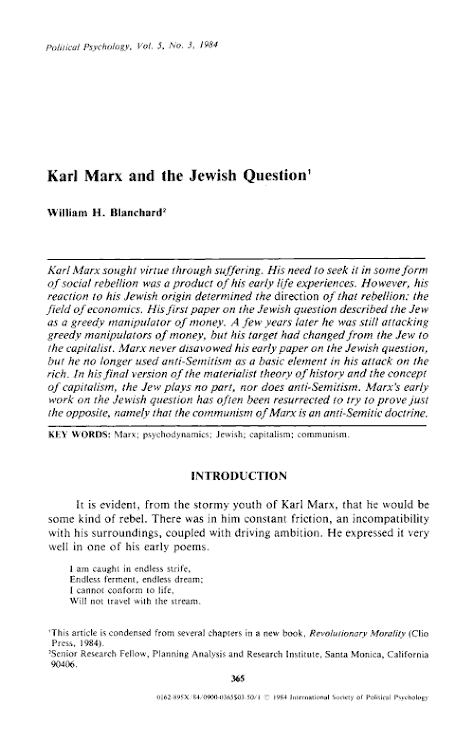











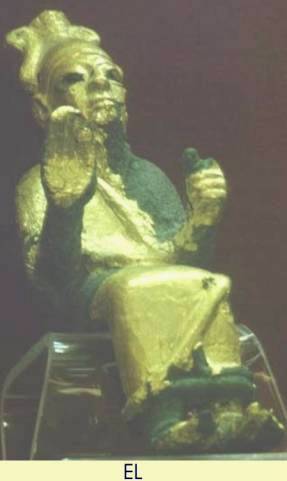




























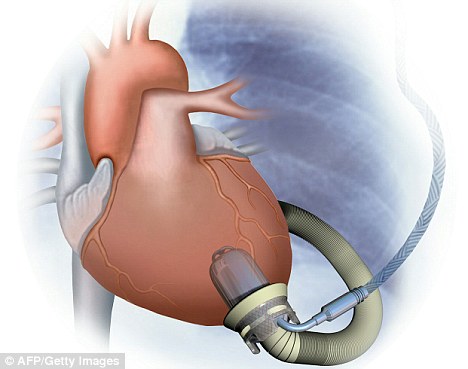

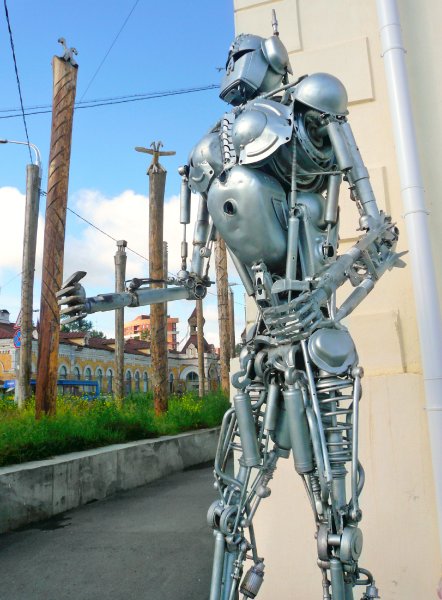


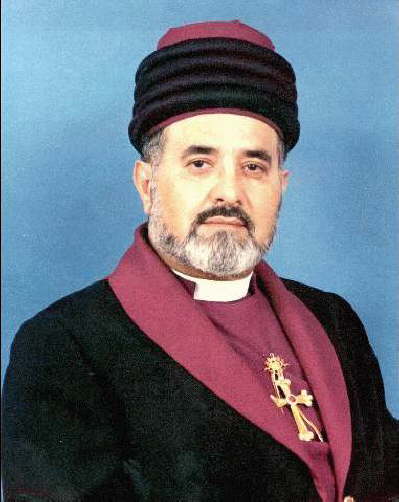+Anniversay+Dinner.jpg)





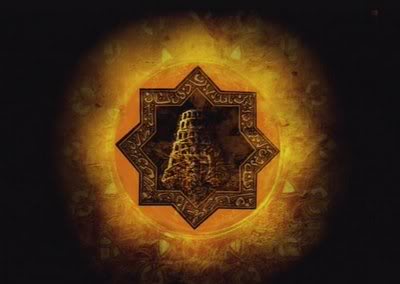





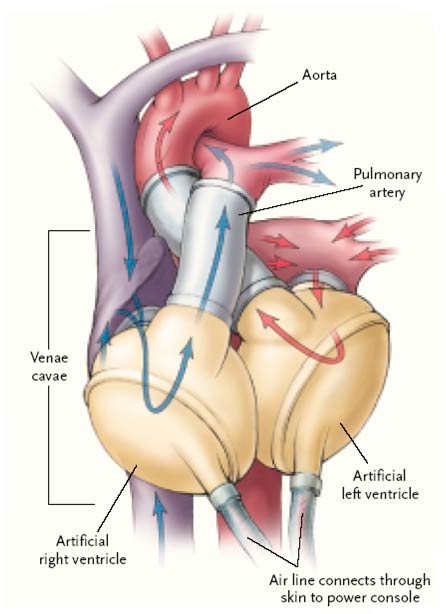



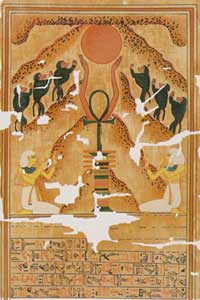








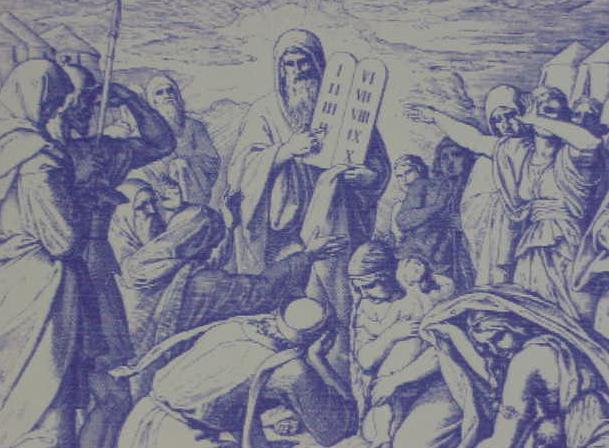
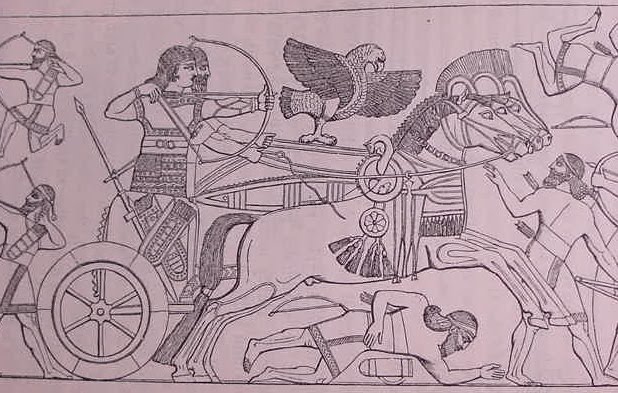



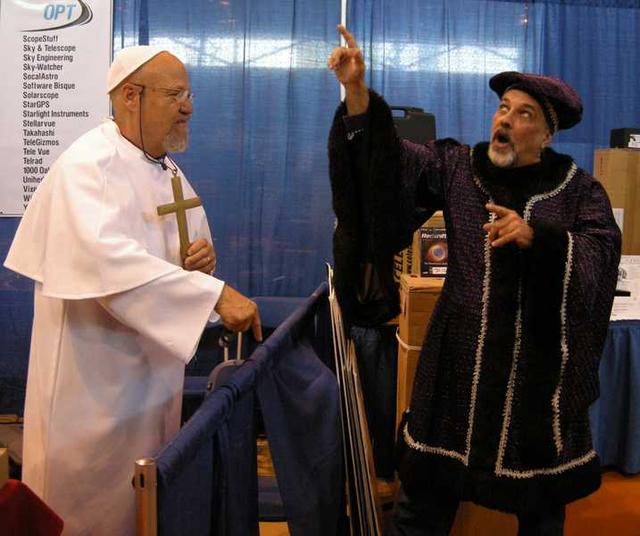




















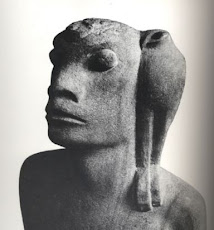












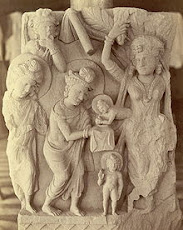



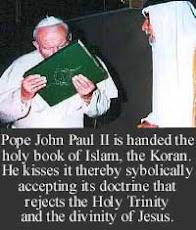


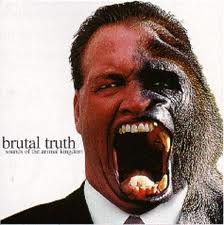









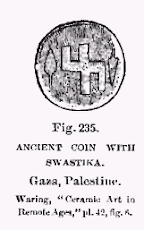



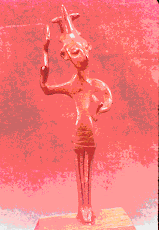






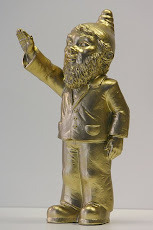












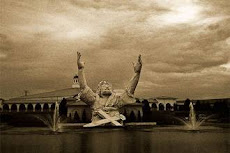














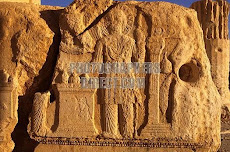


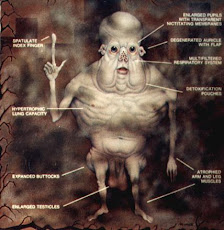






















No comments:
Post a Comment